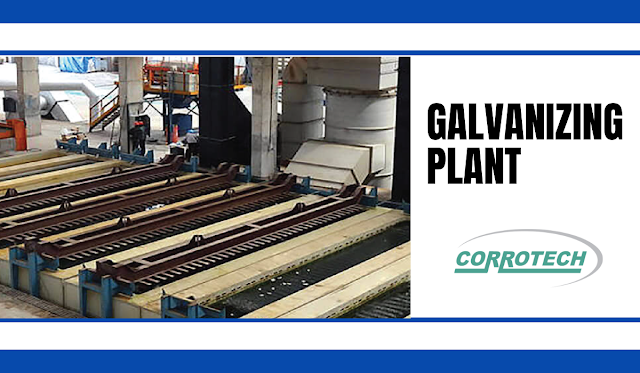Metal Magic: Unveiling the Wonders of the Galvanizing Plant Industry
Introduction
In the realm of metal transformation, the galvanizing plant industry stands as a testament to innovation and durability. Galvanization, a process that involves coating metal with a protective layer of zinc, plays a crucial role in enhancing the longevity and resilience of various metal products. In this blog, we delve into the fascinating world of galvanizing plants, exploring the process, applications, and the indispensable role they play in ensuring the durability of metal structures across diverse sectors.
1. The Galvanization Process: Preserving Metal Brilliance
At the heart of the galvanizing plant industry lies the transformative process of galvanization. This method involves immersing metal articles, usually made of steel or iron, into a bath of molten zinc. Through a series of carefully controlled steps, a metallurgical reaction occurs, forming a protective layer of zinc on the metal's surface. This zinc coating acts as a shield against corrosion, ensuring the metal's longevity even in harsh environmental conditions.
2. Corrosion Resistance: A Shield Against the Elements
Corrosion is a natural nemesis of metals, but galvanization serves as an effective armor against this destructive force. The zinc coating not only provides a physical barrier, preventing moisture and corrosive elements from reaching the underlying metal, but also acts as a sacrificial anode. In the event of any scratches or exposed areas, the zinc sacrifices itself, corroding instead of the protected metal. This self-sacrificing mechanism further enhances the corrosion resistance of galvanized products.
3. Applications Across Industries
The versatility of galvanized products spans across a multitude of industries, making the galvanizing plant industry a linchpin in supporting various sectors. From construction and infrastructure to automotive, agriculture, and beyond, galvanized metal finds applications in a diverse range of products. Common examples include galvanized steel structures, utility poles, fencing, automotive components, agricultural equipment, and even outdoor furniture. The applications are as vast as the industries themselves, underscoring the ubiquity and indispensability of galvanized products.
4. Construction and Infrastructure: Building with Strength
In the construction and infrastructure sector, galvanized steel is a cornerstone material. Whether used in the construction of bridges, buildings, or communication towers, galvanized steel provides unmatched strength and durability. Galvanized structures have a longer lifespan, require minimal maintenance, and can withstand the challenges posed by weather, corrosion, and environmental factors. The use of galvanized steel in construction ensures the longevity and integrity of vital infrastructure projects.
5. Automotive Advancements: Rust-Resistant Rides
The automotive industry benefits significantly from the application of galvanized coatings. From car frames and chassis to various components under the hood, galvanized steel plays a crucial role in enhancing the lifespan and safety of vehicles. The rust-resistant properties of galvanized coatings contribute to the longevity of automobiles, ensuring they withstand the rigors of diverse climates and road conditions.
6. Agricultural Excellence: Galvanized Greenery
In agriculture, where equipment faces constant exposure to elements like soil, water, and fertilizers, galvanized metal proves to be an invaluable asset. Agricultural machinery, fencing, and infrastructure benefit from the corrosion resistance of galvanized coatings, providing farmers with durable and low-maintenance solutions. Galvanized products contribute to the efficiency and longevity of agricultural operations, ensuring that farming equipment remains robust and reliable.
7. Outdoor Durability: Galvanized Gardening
Even in the realm of outdoor living and gardening, galvanized products showcase their durability. From galvanized planters and raised beds to fencing and outdoor furniture, these products withstand the challenges posed by varying weather conditions. The corrosion-resistant nature of galvanized metal ensures that outdoor spaces remain aesthetically pleasing and structurally sound for years to come.
8. Sustainability and Recyclability
Beyond its protective properties, galvanization aligns with sustainable practices. Zinc, a key component in the galvanizing process, is highly recyclable. Galvanized steel can be recycled without any loss of quality, contributing to a circular economy. The longevity of galvanized products also reduces the need for frequent replacements, minimizing the environmental impact associated with manufacturing and disposal.
Conclusion: Galvanizing the Future
The galvanizing plant industry stands as a testament to the marriage of innovation and durability in the world of metals. Through the transformative process of galvanization, metals are endowed with a protective layer that enhances their longevity and resilience. From construction to agriculture, automotive to outdoor living, galvanized products permeate our daily lives, ensuring that the metal magic they bring continues to shape a durable and sustainable future. As industries evolve and seek solutions that marry strength with longevity, the galvanizing plant industry remains at the forefront, preserving the brilliance of metal and fortifying the foundations of countless structures across the globe.

.webp)
.png)
Comments